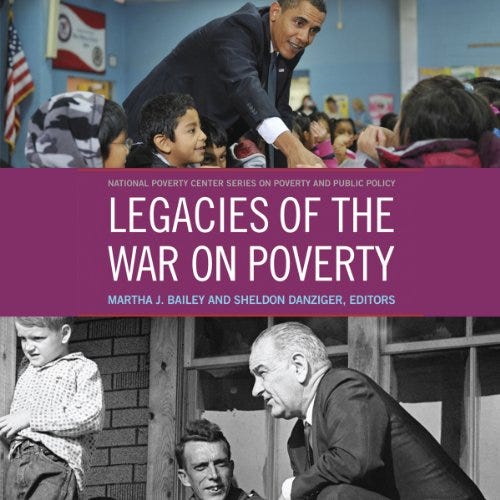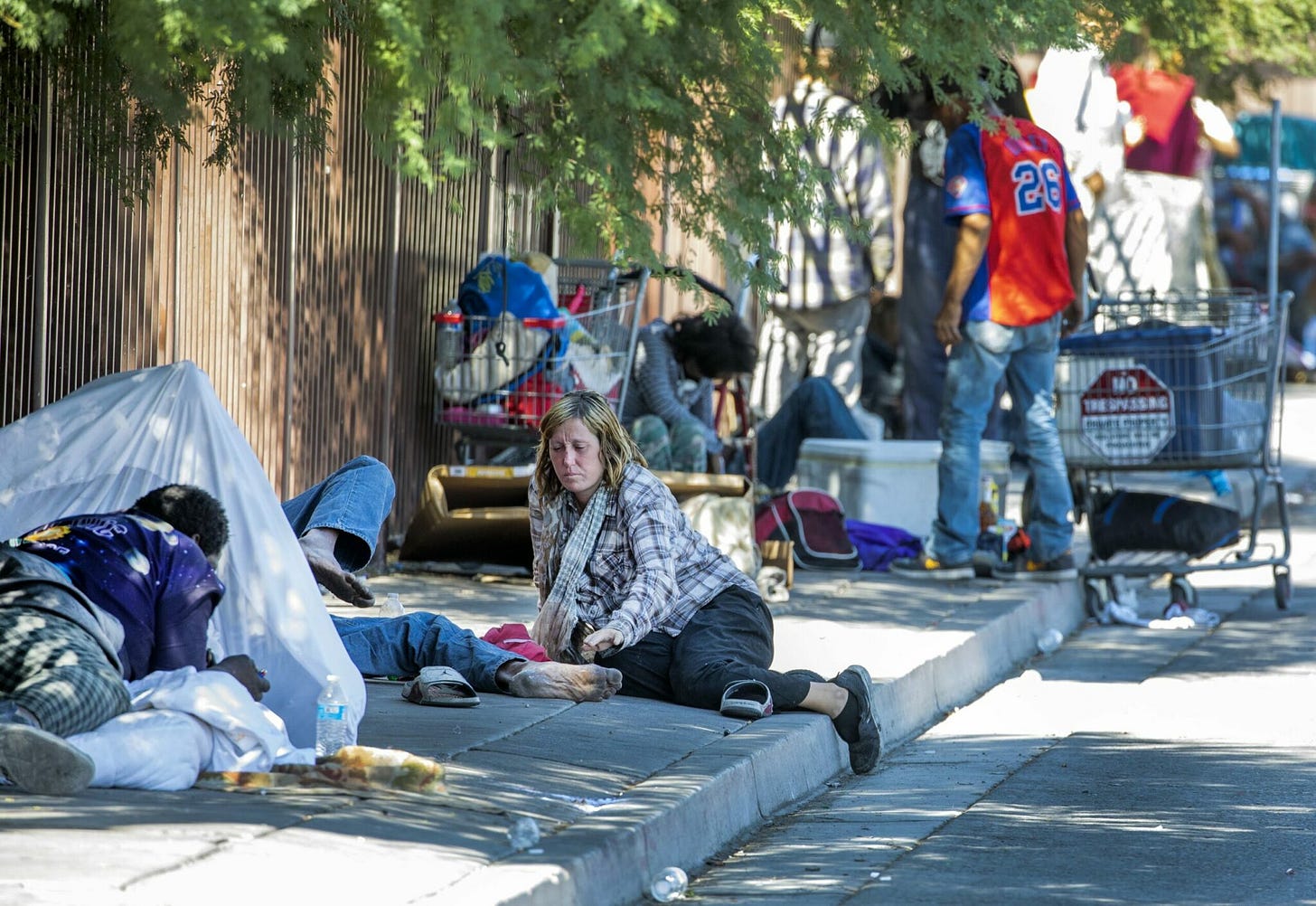Book Review: “Legacies of the War on Poverty,” edited by Martha J. Bailey & Sheldon Danziger, 2013. NYC: Russell Sage Foundation, 322 pages.
In 2025, we are talking about this same topic...
This book includes ten papers compiled over ten years ago with the core theme being the struggle to conquer poverty in the United States. In 2025, we are talking about this same topic, and many topics related to it, having never won this battle.
Chicago has 80,000 or so native homeless persons. Venezuela has lost many of its young people to other countries. Many of them have wound up here, in the windy city.
By definition, these migrants are also all of them homeless. They did not bring a house with them. Recently, the figure of 50,000 is being used by the city officials when discussing the migrants.
So at least for Chicago, poverty continues years after this book was published. The editors assemble here ten papers on the history of the war on poverty, covering its beginnings with JFK to the current great recession creating and disabling the poor in our country. They write the first chapter, explaining how Lyndon B. Johnson took up the torch and planned to eradicate poverty in the USA. They show the origin of many charitable programs, from food stamps to unemployment benefits, and they make it clear the numbers of poor persons in this land have not been small.
The battle continues, and the book is has more than one use, as it provides in-depth explanations of the origin of programs and the political connections related to funding, legislation, and public perspectives on spending. As background reading for social workers and for street helpers dealing with the difficulties and needs of the homeless, the book provides a great deal of information indeed.
From the point of view of historical developments, public policy, and political processes, the book could be not only good background reading for teachers but also very helpful for developing or enriching social science units in the K-12 classroom.
For example, what led up to and exploded in 2008 and 2009 is profiled clearly here… great background reading for social workers and educators, to say the least.
The readings in the rest of the edition are also helpful, though some include rather technical terminology and concepts from fields such as economics. The text would lend itself well to use in graduate courses or longer summer classes on developing either teacher understanding of the current recession or on creating more informative units on social science topics in the classroom.
The second part of the book includes four readings on increasing human capital, employment, and earnings. Here, four topics in education are discussed: the origins and impacts of Head Start; K-12 education battles; access to higher education; and workforce development. The third part of the book includes: the safety net for families with children; the safety net for the elderly; and the origins and impact of housing programs for families. The last section covers improvements in access to medical care and health.
In addition, these last two chapters on medical care and health are very important as a connection to on Obamacare (and its history), current events, and political processes. Like the other chapters in the book, these two can provide teachers with one solid reference when designing materials and questions for students to ponder. Much of the data here can be used not only for teachers to come to a better understanding of what has been done to help disadvantaged persons in this nation but also for teachers to design and enrich units related to all of the Social Science Goals within the Illinois Learning Standards (https://www.isbe.net/Pages/Standards-Courses.aspx).
Helpful for designing curricula, units, and lesson plans, I would suggest that the themes and data in the book relate to specific strands within the Social Science Goals. Based on the information in this book, I would propose the book includes insights and data helpful specifically related to units addressing these strands in the Illinois Social Science Goals: 14.A, 14.B, 14.C; 14.D; 14.F; 15.A.c; 15.A.d.; 15.E; 16.C.b (US); 16.E.b; 17.C.a; 18.A; 18.B; and 18.C.
Further, these two benchmarks could be impacted also, given the global interdependence of economies: 16.C.5b and 16.C.5c (W). We could also impact benchmarks related to the environment, how it contributes to the current poverty in our nation, and ways to remedy the problems: 17.C.5b and 17.D.5. In addition, it would be interesting to look at how the book could be used as a basis to locate other materials for designing units related to communicating about poverty, politics, social policy, hunger, unemployment, social change, and poverty.
There is more here. There are cultural and other connections to be made from the materials in this book. To do so, we could impact possibly these specific benchmarks within the Illinois Fine Arts Goals: 26.A.5; 27.A.4b; 27.B.4b; and 27.B.5.
Of course, these are only a few suggestions. I would suggest there are more connections, including across subjects. As examples, links could be shown between the above information, plus the various strands and benchmarks suggested, to help impact other learning areas. For Illinois school districts interested in knowing—and still using the challenging but responsible interdisciplinary approach to language teaching—they would be possibly impacting these particular Illinois Foreign Language benchmarks: 29.D.5; 29.E.5; 30.A.5a; and 30.A.5c.
In summary, I would recommend the book for use in various graduate courses and professional development sessions of some length for teachers. I suggest the book is helpful for both developing teacher understanding of the current recession and on creating more informed units on social science topics in the classroom. Teachers will clearly make their own connections to different strands, benchmarks and subject. The above is simply an attempt on my part to call attention to some possible interesting uses for this detailed text.
The book does have some dense passages with technical terms and ideas. It is advanced reading. It is enlightening to read such great detail about poverty and ways it has been addressed in the USA in the last several decades. Compiled and published in 2013, the book got us that far…then we dealt with COVID-19 and the successful recovery from that dent in our economy—thanks to the wise work of President Joe Biden and his team.
Fast forward to 2015: we still need to gear up, inform ourselves, and think of the various weapons and strategies we need to try next. Some ideas need to come to the forefront quickly, and some new and bright leaders need to stand up to lead the cause.
Denying that respecting diversity is important does not seem to be an adult approach to the complex problems of poverty.






